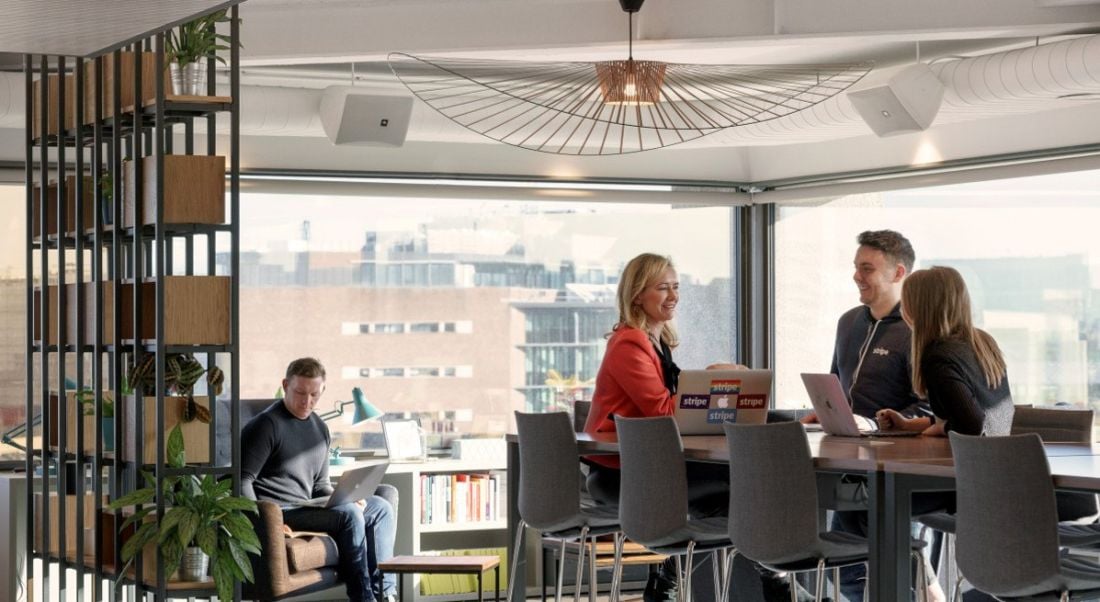Building the future of commerce, Stripe wants to put its engineers closer to its customers.
Payments platform Stripe is to hire more than 100 engineers for its fifth engineering hub but has revealed that they will all be working remotely.
The company has already established engineering hubs in Dublin, San Francisco, Seattle and Singapore.
‘Our remotes keep us close to our customers, which is key to building great products’
– DAVID SINGLETON
Siliconrepublic.com recently reported that the company is growing its existing engineering hub in Dublin tenfold after winning a vital e-banking licence from Ireland’s Central Bank that will enable it to process pan-European payments following a hard or soft Brexit.
The remote future of work
The company, founded by Irish brothers John and Patrick Collison in San Francisco, also recently acquired Touchtech Payments, a Dublin-based payments start-up, for an undisclosed sum as it prepares for the onset of the new Strong Customer Authentication regulation in Europe in September.
Stripe’s head of engineering, David Singleton, recently revealed in a blogpost that the company is establishing a fifth engineering hub that “is less traditional but no less important: remote”.
He continued: “We are doing this to situate product development closer to our customers, improve our ability to tap the 99.74pc of talented engineers living outside the metro areas of our first four hubs, and further our mission of increasing the GDP of the internet.
“Stripe will hire over a hundred remote engineers this year. They will be deployed across every major engineering workstream at Stripe.”
There are practical reasons for this and Singleton said that Stripe has hired hundreds of high-impact remote employees since inception who have reported to teams based in its various hubs.
“Our remotes keep us close to our customers, which is key to building great products,” Singleton said. “They are deeply embedded in the rhythms of their cities. They see how people purchase food differently in bodegas, konbini and darshinis. They know why it is important to engineer robustness in the face of slow, unreliable internet connections. They have worked in and run businesses that don’t have access to global payments infrastructure.”
The new remote engineering hub will be “coequal” with Stripe’s physical hubs, Singleton explained, with its own dedicated engineering teams and its own remote engineering lead analogous to the site leads that Stripe has for its physical hubs.
Singleton said that remote working has been made more tangible thanks to the fact that the technological substrate of collaboration has become “shockingly good” over the last decade.
In addition to hiring engineers, Stripe plans to begin hiring remote product managers, engineering managers and technical programme managers later this year as well as remote employees in non-engineering positions across the company.
Hiring will be aggressive, said Singleton. “We will hire at least a hundred remote engineers this year. We expect to be constrained primarily by our capacity to onboard and support new remote engineers, and we will work to increase that capacity.”
An internal survey found that 73pc of engineers believe the company does a good job of integrating remote employees.
“Most engineering work at Stripe happens in conversations between engineers, quiet thinking, and turning those thoughts into artefacts. Of these, thinking is the only one that doesn’t primarily happen online.
“There was a time when writing on a whiteboard had substantially higher bandwidth than a Word doc over email. Thankfully, Google Docs, Slack, Git, Zoom and the like deliver high-bandwidth synchronous collaboration on creative work. The experience of using them is so remarkably good that we only notice it when something is broken. Since you write code via pull requests and not whiteboards, your reviewer needs to have access to the same PR; having access to the same whiteboard is strictly optional.
“While we did not initially plan to make hiring remotes a huge part of our engineering efforts, our remote employees have outperformed all expectations,” Singleton said. “Foundational elements of the Stripe technology stack, our products, our business and our culture were contributed by remotes. We would be a greatly diminished company without them.”
Stripe raised $100m in a funding round earlier this year that values it at more than $22bn. The recent investment came from Tiger Global, which previously led a $245m funding round in September 2018. As well as Tiger Global, investors in Stripe include big names such as Peter Thiel, Elon Musk, Sequoia Capital and Andreessen Horowitz.




